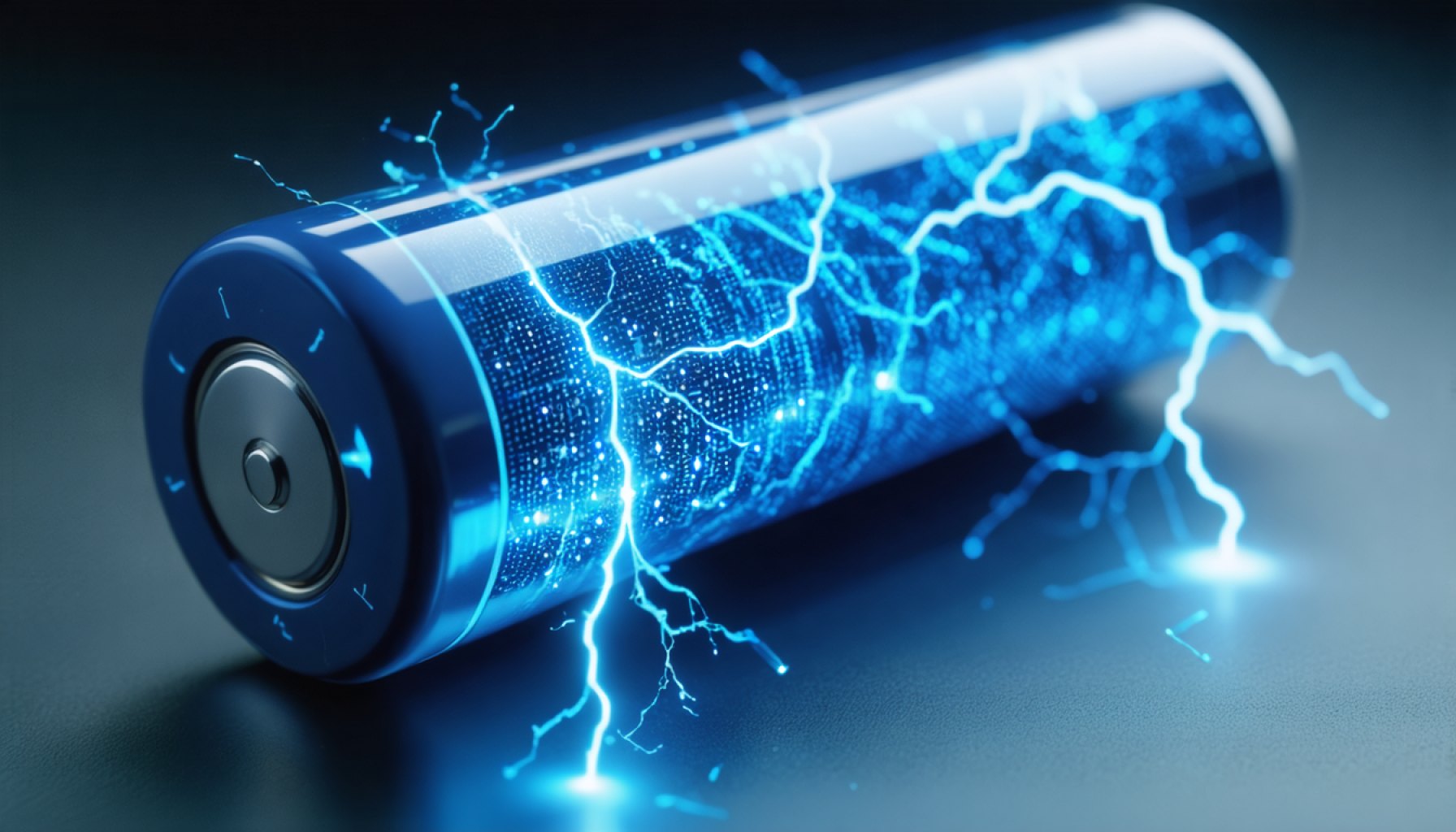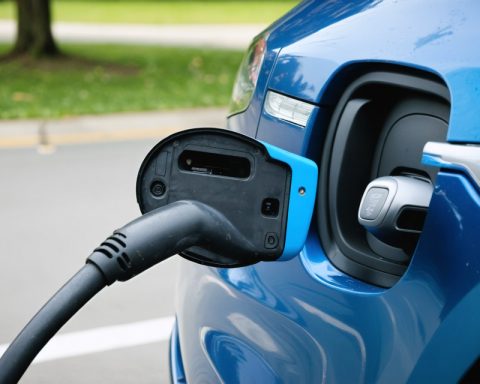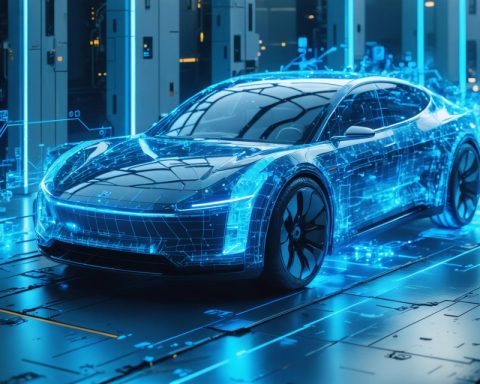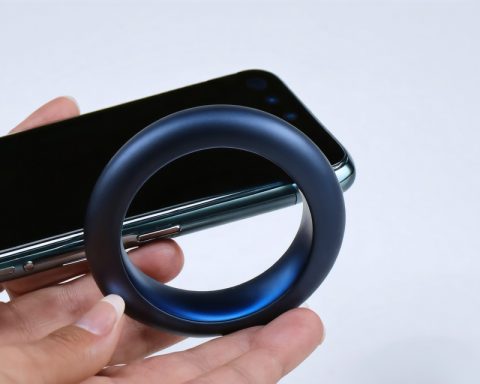- Solid-state lithium metal batteries, featuring LLZO, are hyped for advancing energy storage for electric vehicles and devices.
- LLZO promises high ionic conductivity but faces practical issues like brittleness and high production costs.
- A study shows LLZO-based batteries have limited energy density improvements over conventional lithium-ion batteries.
- The weight and complexity of LLZO hinder its scalability and economic viability.
- Researchers are exploring hybrid solutions, combining LLZO with polymers to enhance durability and functionality.
- Hybrid designs use a mix of solid ceramic and liquid/gel electrolytes to boost performance and manufacturing efficiency.
- The future of energy storage may lie in innovative, hybrid battery technologies that offer both stability and scalability.
Amidst the fervent quest for the ultimate energy storage solution, innovation runs headlong into the gritty realities of physics and economics. The allure of solid-state lithium metal batteries has captured the imaginations of scientists and engineers, touted as a beacon of hope poised to power a new generation of electric vehicles and portable devices. The aspirational material at the center of this ambition, lithium lanthanum zirconium oxide (LLZO), has drawn much attention due to its excellent stability and efficient ion conduction. However, recent scrutiny reveals that the sparkle of LLZO may dim under the harsh spotlight of practical application.
A detailed study conducted at Tohoku University rigorously measured the potential of fully ceramic solid-state batteries using LLZO. The results were less than dazzling, showing only a modest leap in energy density to 272 Wh/kg, barely inching ahead of the best conventional lithium-ion batteries that boast up to 270 Wh/kg. While LLZO offers theoretical brilliance, it is dogged by the burdensome costs and intricate challenges of production. Its density, fraught with formidable obstacles like brittleness and interface instabilities, inflates the battery’s weight, limiting its promise.
In vivid depictions akin to a miniature rock-solid fortress, these LLZO-based batteries must overcome not just the travails of density but also the relentless march of economic feasibility. The material’s stiffness and weight create a paradox: brilliant in theory but unwieldy in execution. The weight erodes potential energy gains, and the intricate fabrication processes hinder scalability.
Yet, the path forward doesn’t vanish into the mist of impracticality. Researchers are pivoting to more promising hybrid designs that marry LLZO with other materials, opening doors to innovative solutions like LLZO-polymer composites. These composites retain the coveted property of high ionic conductivity while shedding some mass and complexity. Imagine, if you will, the composite battery as a nimble acrobat, balancing the stability of LLZO with the agility of polymers, maintaining poise under the demanding conditions of performance and manufacturing.
The hybrid approach proposes a tantalizing blend: integrating a small amount of liquid or gel-like electrolyte with the solid ceramic base, enhancing both ionic transport and structural resilience—traits highly prized in a world eager for more dependable energy solutions. Such designs are not mere theoretical constructs; they have already exhibited improvements in durability and efficiency, potentially lighting the runway to the future of energy storage.
As we look toward an electrified horizon, the essence of the emerging consensus is clear: Innovative hybrid solutions may hold the key to unlocking practical ambitions. By transcending the limits of single-material systems, the research community is weaving a new tapestry that promises flexibility, durability, and, crucially, manufacturability. This fusion of ingenuity and practicality might just be the ticket to the next era in battery technology.
Is the Future of Energy Storage in Hybrid Battery Technology?
In the ongoing race to find an optimal energy storage solution, solid-state lithium metal batteries have dazzled researchers with their potential. Central to this ambition is lithium lanthanum zirconium oxide (LLZO), a material known for exceptional stability and superior ion conduction. However, as with all promising technologies, LLZO presents its set of challenges when scaled for real-world applications.
Key Challenges and Innovations in LLZO Solid-State Batteries
While initial studies, such as those conducted at Tohoku University, have shown that LLZO solid-state batteries can achieve an energy density of 272 Wh/kg, this modest improvement over current lithium-ion batteries is shadowed by the difficulties in production and practical application. The brittleness and interface complexities inherent in fully ceramic LLZO batteries increase weight without delivering corresponding energy gains.
Challenges and Limitations
– Costly Production: The manufacturing process of LLZO is intricate and expensive, hindering scalability.
– Material Weight and Stiffness: The dense nature of the ceramic material makes the batteries heavier, negating some performance benefits.
– Interface Instability: Issues with LLZO interfaces can lead to decreased performance and durability.
Hybrid Battery Designs: A New Frontier
The future of solid-state batteries may lie in hybrid technologies, merging LLZO with flexible materials. Such innovations could balance the high ionic conductivity of LLZO with the lightweight, durable nature of polymers. By introducing small amounts of liquid or gel electrolytes into the solid matrix, hybrid designs aim to:
– Enhance ionic transport
– Improve structural resilience
– Reduce production complexities
Benefits of Hybrid Batteries
– Increased Durability: Hybrid designs usually exhibit greater longevity and stability under rigorous conditions.
– Enhanced Ionic Conductivity: The blend of materials can facilitate more efficient ion movement, crucial for charging and discharging.
– Potential for Scalability: Lower production costs and complexities make hybrid batteries a promising candidate for mass production.
Real-World Use Cases and Industry Trends
Hybrid battery technology stands on the cusp of transforming sectors heavily reliant on efficient energy storage solutions:
– Electric Vehicles (EVs): Lighter and more efficient batteries can enhance the range and charging speed, making EVs more appealing to consumers.
– Portable Electronics: Longer-lasting batteries can revolutionize the usability of smartphones, laptops, and other devices.
– Renewable Energy Storage: Reliable and scalable storage solutions are crucial for the integration of renewable energy sources like solar and wind.
Insights and Market Predictions
Market analysts predict a significant shift towards hybrid solid-state batteries as part of a broader trend:
– Increased Investment: The demand for more efficient energy storage solutions is driving substantial investment in research and technology development.
– Growing Electric Vehicle Market: By 2030, the electric vehicle market is expected to grow exponentially, fueling the need for advanced battery technologies.
Actionable Recommendations
– For Investors: Consider directing resources towards companies and research that focus on hybrid solid-state battery technologies, as these are likely to be pivotal in future innovations.
– For Consumers: Stay informed about emerging hybrid battery solutions for upcoming electronic devices and electric vehicles, as these may offer better performance and longevity.
– For Researchers: Explore potential synergies between LLZO and other materials to enhance performance and manufacturability.
In conclusion, while LLZO-based solid-state batteries face challenges, the hybrid approach presents a viable path forward. By leveraging the strengths of multiple materials, innovators are crafting a battery technology that promises to meet the demands of tomorrow’s energy storage needs.


















